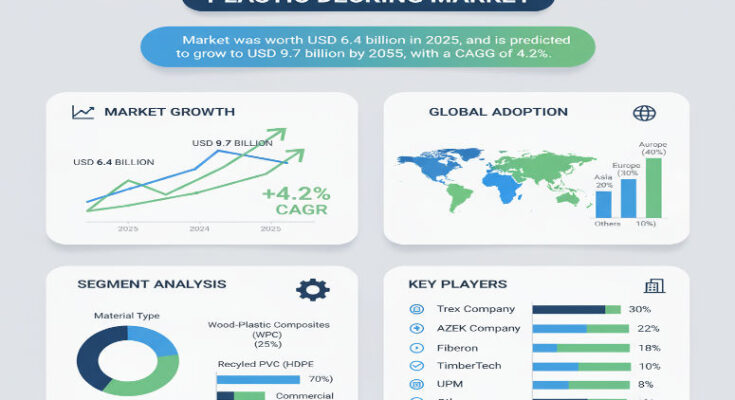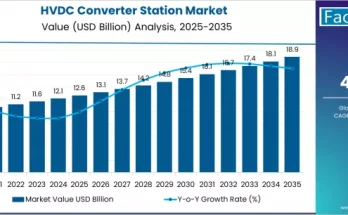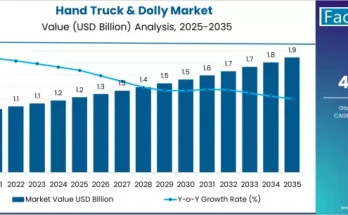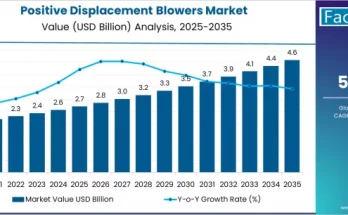The global plastic decking market is entering a transformative growth phase, with new market analysis projecting expansion from USD 6.4 billion in 2025 to USD 9.7 billion by 2035, representing a compound annual growth rate (CAGR) of 4.2%. This significant growth trajectory reflects the accelerating adoption of advanced decking materials across residential, commercial, and industrial applications worldwide.
According to the comprehensive market forecast, the first half of the decade (2025-2030) will witness substantial momentum, with the market climbing to approximately USD 7.9 billion, adding USD 1.5 billion in value. This initial growth phase will be characterized by rapid adoption of high-density polyethylene (HDPE) decking systems, driven by increasing residential construction volumes and growing demand for low-maintenance outdoor building solutions.
HDPE Maintains Market Leadership
HDPE-based plastic decking systems command a dominant 50% market share, solidifying their position as the preferred material choice for outdoor construction applications. The segment’s leadership stems from superior durability characteristics, exceptional weather resistance, and construction optimization capabilities that enable residential and commercial facilities to achieve optimal outdoor performance. Industry experts note that HDPE systems differentiate themselves through proven operational reliability, consistent material characteristics, and seamless integration with automated construction systems.
PVC decking solutions hold a 30% market share, appealing primarily to commercial applications requiring enhanced durability properties and premium positioning. Meanwhile, composite and other materials capture 20% of the market through comprehensive aesthetic requirements in residential projects and specialty installations.
Residential Sector Drives Primary Demand
The residential segment demonstrates clear market leadership with a commanding 65% share, driven by widespread adoption of decking systems in home improvement projects and outdoor living space development. Homeowners and property developers increasingly prioritize material consistency, aesthetic appeal, and integration with existing construction infrastructure to maximize property value while maintaining building standards.
Commercial applications account for 25% of market share through comprehensive facility requirements in office buildings, retail centers, and hospitality facilities, while industrial applications represent 10% of the market, including manufacturing facilities, warehouses, and processing centers requiring efficient decking solutions.
Regional Growth Dynamics
The market exhibits varied regional dynamics with distinct growth patterns across major economies. India leads with the fastest growth rate at 5.5%, followed by China at 5.0%, both driven by aggressive residential construction programs and comprehensive housing development initiatives. Mexico maintains strong regional performance at 3.8% growth, while Germany (3.6%), United States (3.5%), South Korea (3.4%), and Japan (3.0%) demonstrate steady expansion supported by established construction industries and advanced material adoption.
East Asia, North America, and Western Europe emerge as key growth regions, with established construction infrastructure and advancing building standardization requirements supporting consistent market expansion. Emerging markets show particularly strong growth driven by residential applications and construction integration trends.
Market Drivers and Opportunities
Several key factors are propelling market growth. The surge in residential construction and outdoor living trends represents the primary driver, as large-scale residential development requires durable, low-maintenance decking solutions with consistent quality and aesthetic performance. The inherent low maintenance requirements and durability advantages of plastic decking materials drive demand for long-lasting solutions with reduced upkeep needs.
Weather resistance and climate adaptability further enhance market appeal, as construction facilities increasingly need reliable, weather-resistant decking solutions suitable for diverse environmental conditions. However, the market faces challenges including raw material price volatility, polymer cost fluctuations, and installation complexity requiring professional contractor expertise.
Distribution Channel Insights
Retail channels demonstrate distribution leadership with 55% market share through widespread consumer access via home improvement stores and building supply retailers that maximize product availability while maintaining competitive pricing. Trade and contractor channels capture 45% of the market through comprehensive professional requirements in construction projects, commercial installations, and specialty applications requiring contractor expertise and bulk purchasing capabilities.
Competitive Landscape
The plastic decking market features a moderately consolidated competitive structure with 18-22 credible players, where the top five to seven companies hold approximately 40-45% of total market revenue. Market leadership is maintained through brand recognition, material innovation, and distribution control, with particular emphasis on durability retention, aesthetic appeal, and installation support.
Key players in the market include Trex, TimberTech, Fiberon, MoistureShield, CertainTeed, Universal Forest, UPM, Eva-Last, Green Bay Decking, Advanced Environmental, NewTechWood, Cali-Bamboo, DuraLife, Lumberock, and Nexan. While basic HDPE materials and standard color options are becoming commoditized, significant margin opportunities exist in premium composite solutions, installation services, and integrated building solutions including design consultation and maintenance programs.
Browse Full Report: https://www.factmr.com/report/plastic-decking-market
Future Outlook
The latter half of the forecast period (2030-2035) will witness continued robust growth from USD 7.9 billion to USD 9.7 billion, representing an addition of USD 1.8 billion. This phase will be defined by mass market penetration of composite decking technologies, integration with comprehensive building management platforms, and seamless compatibility with existing construction infrastructure.
Industry analysts note that the market trajectory signals fundamental shifts in how construction facilities approach outdoor decking installation and maintenance management. Future revenue streams are expected to diversify beyond traditional material sales to include smart decking integration (5-8% of future revenue), installation service solutions (4-7%), and maintenance and care products (3-6%), reflecting the market’s evolution toward comprehensive outdoor construction solutions.
The growing emphasis on sustainable building practices, combined with advancing material technologies and increasing consumer awareness of total cost of ownership benefits, positions the plastic decking market for sustained growth throughout the forecast period and beyond.



